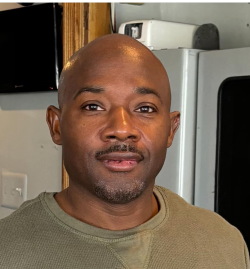

Dennis Boatwright, II
Political Activist

Congo: The Longest Tragedy
Photo above: Congolese flee violence of Rwanda-backed M23 rebels
The Democratic Republic of the Congo (DRC) is one of the longest tragedies in human history. This equatorial country, which sits in the heart of Africa, has suffered like no other country in modern times. The DRC is admired for its geographical endowments and is highly coveted both for its superabundance of natural resources that are vital to the functioning of a modernized world. This enormous wealth inspired Chinese leader Mao Tse Tung to say whoever controls the Congo controls the world.
The problem with the Congo’s wealth is that the West does not want to pay for what Africa possesses—not even a fifth of its market price. This is where the tragedy begins. In fact, the first uses of the term “crimes against humanity” occurred when other European nations were describing King Leopold II’s control of the Congo Free State. For its ivory and rubber, for instance, the colonial administration of Leopold II enslaved, tortured and amputated the hands of men, women and children when they did not produce the amount of rubber he desired. It is estimated that up to 15 million Congolese were murdered since the 1884 Berlin Conference to 1908 when Belgium paid Leopold II to hand over the Congo. But the takeover by the Belgium government did not decrease the brutality and darkness suffered by the Congolese. Surprisingly, a bright spot emerged.

In 1960, the Republic of the Congo gained its independence along with 16 other African nations. The highly popular Patrice Lumumba emerged out of this independence explosion as the first head of state of newly independent Congo. Prime Minister Lumumba was considered a hero of Africa for quickly implementing land reforms and equitably redistributing the country’s wealth. These actions instilled a rare hope and pride in the Congolese people that was shaken at the start of colonialism. However, the optimism Lumumba created seemed like a mirage. Less than 90 days later Lumumba was brutally kidnapped and assassinated by forces led by Moise Tshombe, one of Africa’s biggest traitors. Tshombe quest to murder Lumumba was lavishly supported and funded by a coterie of European nations, including the United States, Belgium and the United Kingdom. Since Lumumba’s assassination the Congo has been locked into nothing less than a nightmare with periodic violent flare ups that attract national attention and sympathy.
One such crisis began in 1994 when millions of Congolese were slaughtered by Rwandan-backed militias who were funded by Western powers. This war is conveniently described by mainstream media solely as a tribal war between the Hutu and Tutsi ethnic groups to hide the complicity of the West.
The truth is that multinational mining corporations create and fund mercenary groups—recruited largely from Rwanda and Uganda—to terrorize masses of people from land where there is an abundance of mineral deposits. Once the targeted land is subdued foreign corporations have uninhibited access to extract valuable raw material such as cobalt, a national security mineral used to manufacture rechargeable batteries for cellphones, laptops, power tools, electric vehicles, and is present in nearly every device we rely upon. Sadly, the same forces robbing Africa after the Berlin Conference are the same forces exploiting the Democratic Republic of the Congo 140 years later.
Just last month the rebel group M23 overpowered Congolese security forces before taking control of Goma, a key, resource rich, eastern region of the Congo. This militant group is partly funded by the government of Rwandan President Paul Kagame, who is a favorite of the West. Kagame reinforces M23 forces with Rwandan soldiers who have experience murdering Congolese Hutus, in particular. Already thousands have been mercilessly killed by M23 militants and Rwandan soldiers, and there appears no end in the foreseeable future as the M23 forces vow to continue their merciless campaign until they take control of Kinshasha, the capitol of the DRC.

Unfortunately, it is possible that M23 can achieve its deplorable objectives. Congolese President Felix Tshisekedi is a weak leader who has mismanaged the Congo in the interests of the West and China since 2019. Moreover, his army suffers from low morale and a growing percentage of the masses long for Tshisekedi to leave the neocolonial yoke of the West and explore the route of Capt. Ibrahim Traore and the other leaders of the Alliance of Sahel States. But if M23 succeeds the West will be the largest beneficiary, as M23 lacks military might and governing skills to ward off Western demands once they turn against them. Furthermore, the African Union cannot be relied upon. Essentially, the AU is limited to issuing strong condemnation but is unwilling to commit troops to defeat the Rwanda-back rebels that have violated the territorial integrity of the DRC. In the final analysis, these doomsday scenarios ensure that, barring a miracle, the DRC will remain a very sad commentary for years to come.
Posted: Tue, Feb 11









